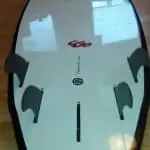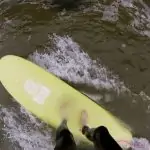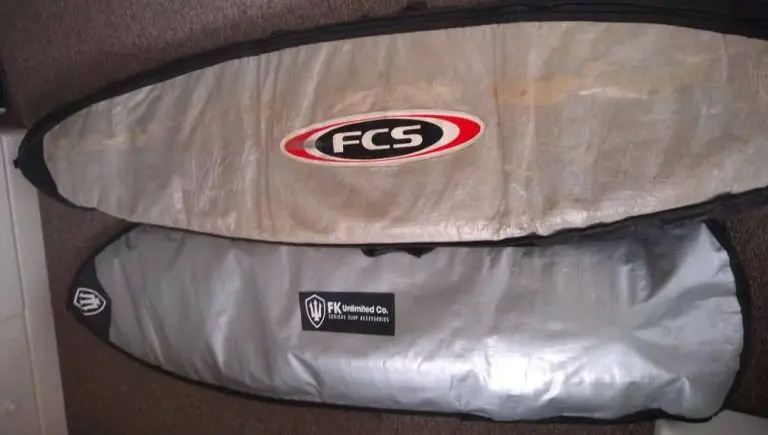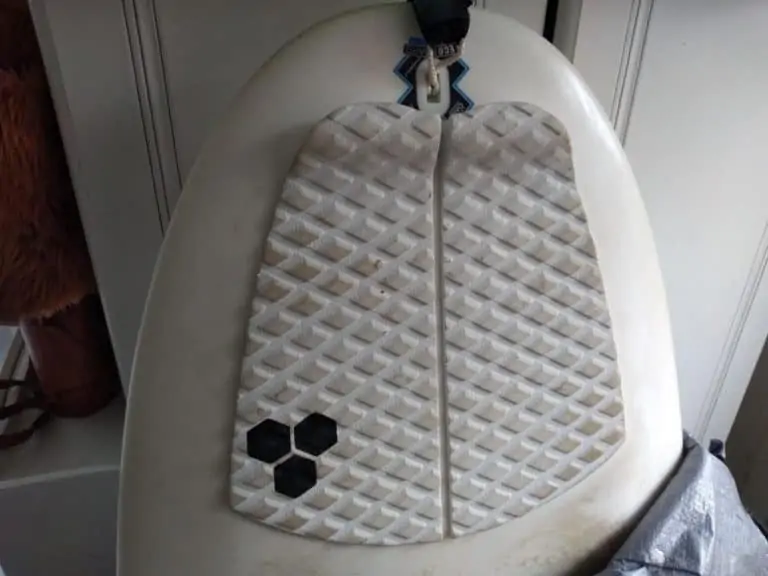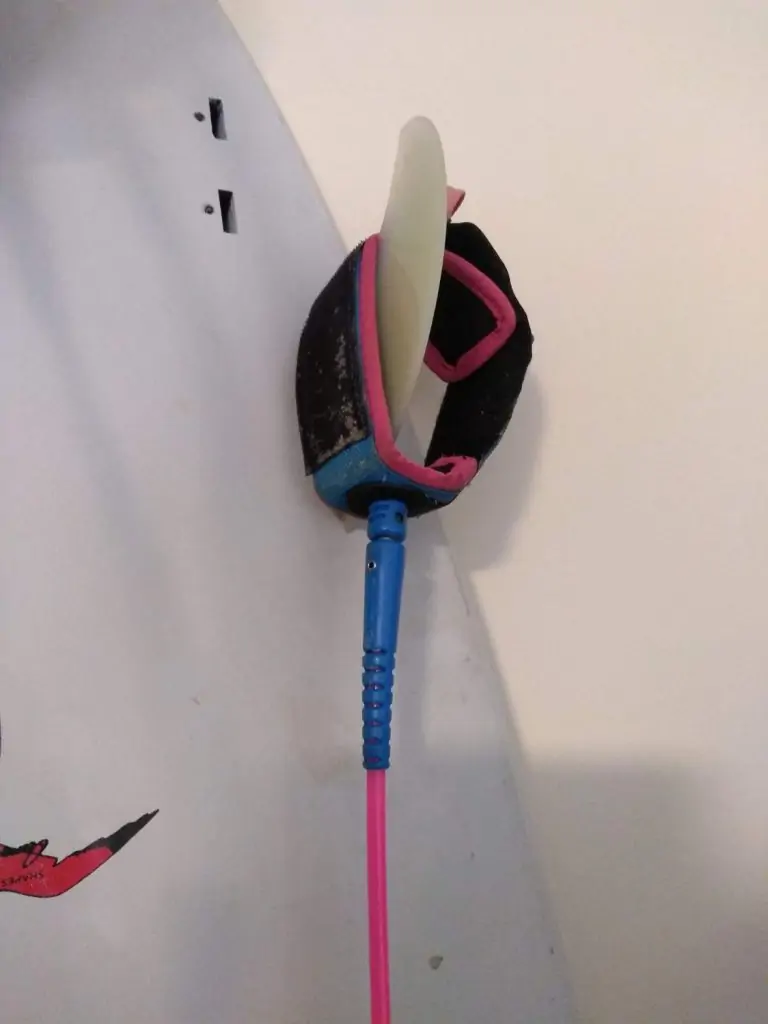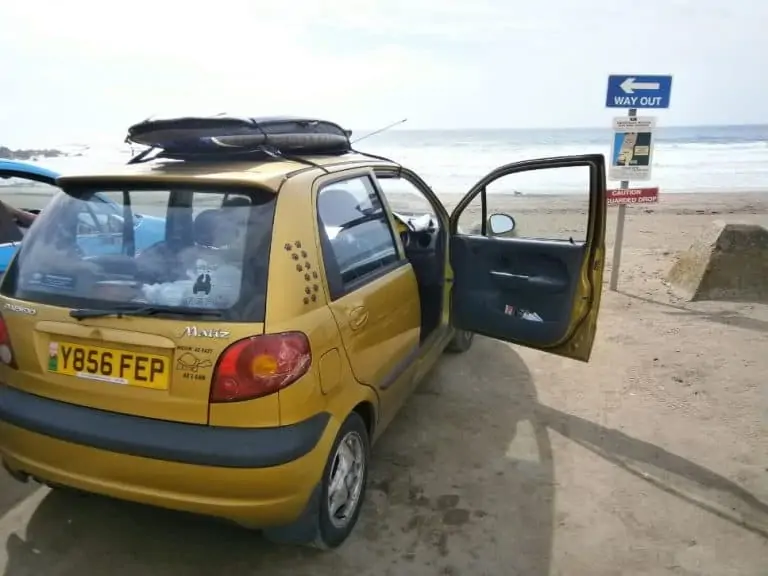Why Do You Need Fins on a Surfboard?
Fins on a surfboard are an essential feature for all standard boards yet the reasons for this are not always obvious.
Surfboard fins look a little odd in terms of their design and may leave you asking a few questions about their purpose.
So, why do you need fins on a surfboard?
Surfboard fins provide grip in the wave as they hold the board in the water, allowing the surfer to go in straight lines and turn their surfboard without spinning out of control.
However, there are lots of variations on fins, as we’ll look at below in detail.
How many fins should a beginner surfer have? 3 fins is best for a beginner surfer. This is because learner surfboards are almost all designed for 3 fins and this is the best option for control and speed.
Surfboard Fins for Control
Surfboard fins give the board control when riding on a wave. Since they are at the back of the board, they provide a stabilizing point as they drag through the wave. This drag in turn means that the fins allow your surfboard to keep a straight line as you ride along the wave.
Do You Need Fins in a Surfboard?
You need fins in a standard surfboard if you want control and to be able to perform turns and ride like most other surfers. Trying to surf a standard board without fins will leave you spinning constantly.
However you can find ‘finless’ surfboards that are designed differently and mean that they can be ridden without fins. That said, finless surfboards really are an exception to the rule and are a rarity with probably less than 0.01% of surfers riding these kinds of boards.
Comparison: Riding with Fins to Riding Without
To help explain the point, consider the two videos below, both at the same wave and both of famous surfers but with one crucial difference: Tom Curren is riding with fins, Derek Hynd is riding without.
Surfing with Fins: Tom Curren
Finless or ‘fins free’ Surfing: Derek Hynd
Immediately you can see that Derek Hynd’s board requires him to crouch low and turn in a very different way, leaning slowly and spinning often.
By contrast, Tom Curren’s standard surfboard with fins shows that he has a lot of control and is able to perform tight, arcing turns across the face of the wave.
This instantly shows the benefits of having a surfboard with fins in it for being able to do maneuvers and turn.
However, something that might not be obvious here is that having fins in a surfboard actually makes the board much slow. This is again the result of the drag that offers the control, but the trade-off for that control is a loss of speed, which is something that Derek Hynd consistently mentions when he is asked about fins-free surfing.
Another point is that the finless board Derek Hynd is shown riding in the video above actually has several grooves in the bottom of the board. This is again to offer grip and some control but is not something that we can really call ‘fins’, although they are definitely there in place of standard fins.
Types of Surfboard Fin Set-ups
As well as seeing the difference in boards with and without fins, there are also many different types of surfboard fin combinations which affect how a board performs, as we’ll look at next.
Single fin
A single fin set-up on your surfboard means having one very large fin, usually 8 inches (20cm) or more in length, placed in the center of your board. Single fins hold a straight line well but are not easy to turn since they are stiff. Single fins are common on longboards and mid-length surfboards.
PS Check my post on getting the right size fins for your longboard or mid-length surfboard here now!
Single fins were the first type of surfboard fins used, way back over 80 years ago. Since the boards people were riding then were long, heavy and large, the fins had a similar design.
However, this means that they are best suited to longboards since surfboards with a single fin do not turn well and can be quite slow, which is fine for longboarding but not what you want for a shortboard.
If you try to learn on a longboard, you might find that it has only one fin, but this is less than ideal since longboards are harder to maneuver and heavier, making them more dangerous when you are learning.
Having one fin will also be more dangerous since the fin itself will have more pressure in case of any impacts with you, so bear this in mind when you are learning to surf.
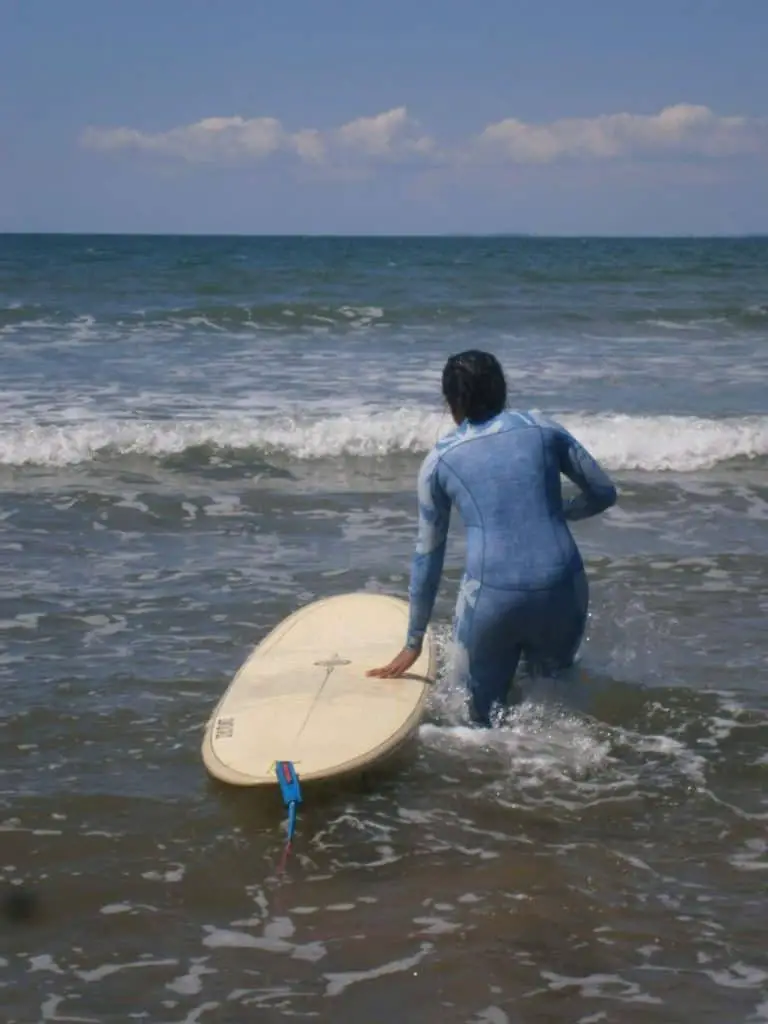
Summary: single fins are best for going straight, are slow to turn and generally only on longboards, although some ‘retro’ shortboards have these for fun factor.
Twin fins
With the evolution of surfboard design, cutting the board down several feet in length from the big, heavy longboards to shorter, narrower ‘shortboards’ came the idea to ride a surfboard with two fins or ‘twin fins’.
This was part of the shortboard revolution, and happened at the forefront of competitive surfing.
Four-time world surfing champion Mark Richards is most famous for riding twin fins, and continues to shape and ride them to this day.
One of the key benefits of twin fins is that they are incredibly fast given that the fins are out close to the rails, allowing the board to cut through the water without the drag in the middle of the board. They are definitely faster than 3-fin ‘thruster’ surfboards, however twin fins do not have as much control and have a much larger/wider turning arc so they cannot perform maneuvers that are as progressive as the more modern thruster fin set ups on most shortboards today.
They usually come with a board that has a long, drawn out swallow tail as this channels the water in a way that helps with turning the board given the lack of a middle fin.
Twin fins are also quite large and upright. They are large because of their limited number and, if comparing, twin fins may have a similar surface area to a set of 3 thruster fins. However, twin fins do not curve backwards like thruster fins, which is noticeable when you see them. This is because of their positioning as they are close to the rail and so the upright, straightened design is necessary to offer more control given their placement on the board.
Summary: surfboards with twin fins are fast and loose and used generally on boards with a big swallow tail, again because of the grip the tail offers (two points).
Three Fins: Thruster
From the twin fin, the obvious next step is the thruster fin set up with the three fins in triangle.
This naturally came after the twin fin in terms of design and is credited to Simon Anderson, another legendary surfer and shaper, with his story told in the video below:
Anderson’s idea to place three, smaller fins on a surfboard led to the next step in the evolution of the shortboard and professional surfing.
It also allowed surfers to perform the most radical maneuvers on shortboards that had ever been seen.
The combination of a shorter board and 3 smaller fins makes the thruster fin set up an ideal balance of control and speed, hence it is the default option for 80% of the surfboards for sale today.
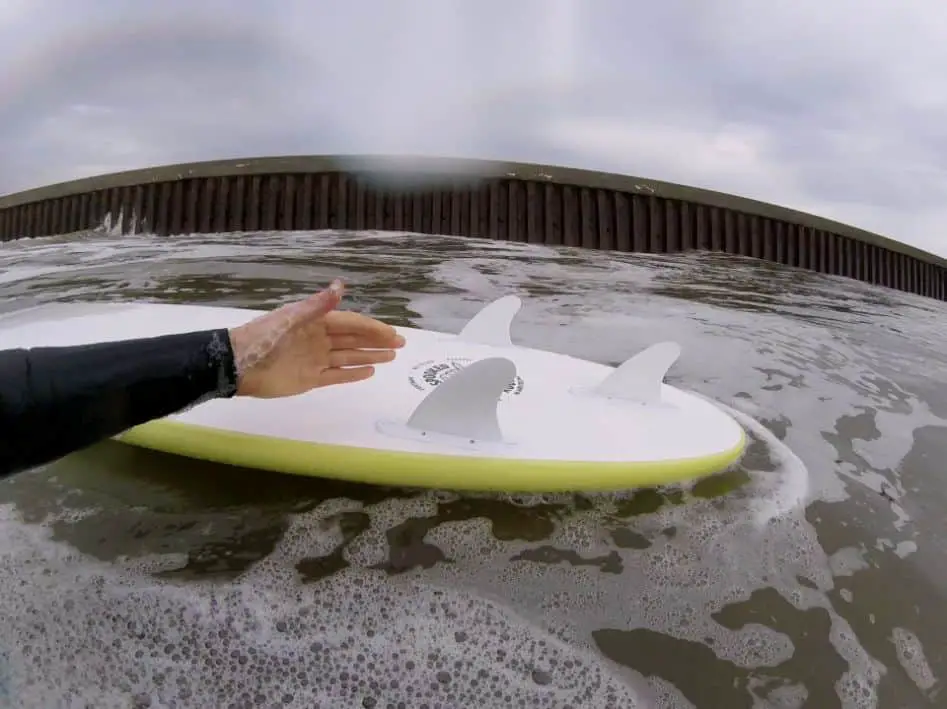
Summary: Three fins are the standard in shortboards and generally considered the best for all-round performance. However, despite the turning ability they offer, thruster fins are definitely slower than twin fins and quads.
Quad fins
From the thruster then came the quad fin set up, with four fins placed almost like two sets of twin fins with a small distance between them.
This was pushed in pro surfing terms by Glenn Winton, or ‘Mr X’ as he was nicknamed. Winton put four fins on many of his surfboards and had some professional success with them, reaching number 5 in the world rankings in 1985.
Despite this, the quad fin set-up on surfboards never really took off until the early 2010s, when surfboard companies started offering surfboards with 5 fin options to let surfers choose between three-fin thrusters or a quad set-up.
This resurgence might also have been due to 11-time world champion Kelly Slater choosing to ride surfboards with quad fins in competitions at places like Pipeline in Hawaii, with large, hollow, barreling waves; Slater is on record as saying that quad fins perform better in steeper, barreling waves given the added speed they offer.
Check my helpful post on surfing a quad fin surfboard for more!
Quad fins are indeed fast, perhaps a little bit less than twin fins but offer more stability than twin fins given the added two fins. They are also loose but are hard to turn in a tight arc given the lack of a center fin.
Can you surf a quad as a twin? No because the position of the quad fins is different to twin fins. Twin fins would be placed in between the quad fin slots so trying to put twin fins into quad slots will either be too far forward or back, affecting the control of the board and won’t feel right.
Summary: surfboards with quad fins are good for speed and barrels but they are harder to turn and control than thrusters. Try with a trailer fin in the back for a bit more control.
5-Fin Surfboard Set-up
What do 5 fins do for a surfboard? If your board has 5 fin slots, this then means that you can choose between using with 3 fins, as a thruster, or 4 fins, as a quad, or even quad with small trailer fin. These are different set-ups, with thrusters being better for turning and quads better for speed.
What does riding with 5 fins do for a surfboard? Riding with 5 fins is really a quad with a trailer fin, as used by Kelly Slater at the New York pro surf event in 2011. So, surfing with 5 fins gives you speed but offer less control than standard thrusters.
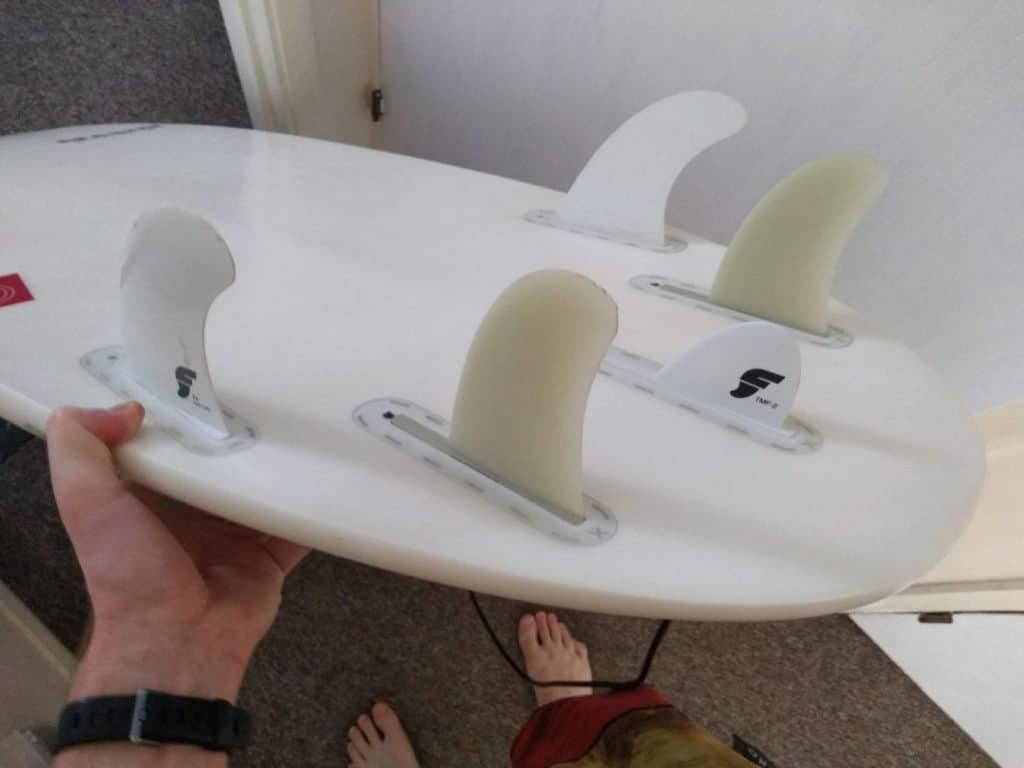
That said, riding with a 5-fin set-up offers more control than quad fins alone so it’s somewhere in between a quad and a thruster, which is one of the reasons why I like riding these kinds of set-ups so much.
I use a 5-fin set-up in both my small-wave ‘groveler’ surfboards (I had a Firewire Chumlee for a while) and my high-performance thruster (currently the Stewart S-Winger).
Finless boards
In fact, the most ancient of surfboards were finless: the classic type of surfboard was called an ‘alaia’, as ridden by Hawaiian royalty for hundreds of years.
These alaia boards were flat and had a square tail. They have seen a resurgence in popularity since shapers like Tom Wegener and professional surfers started riding them in the early 2000s and through into the 2010s.
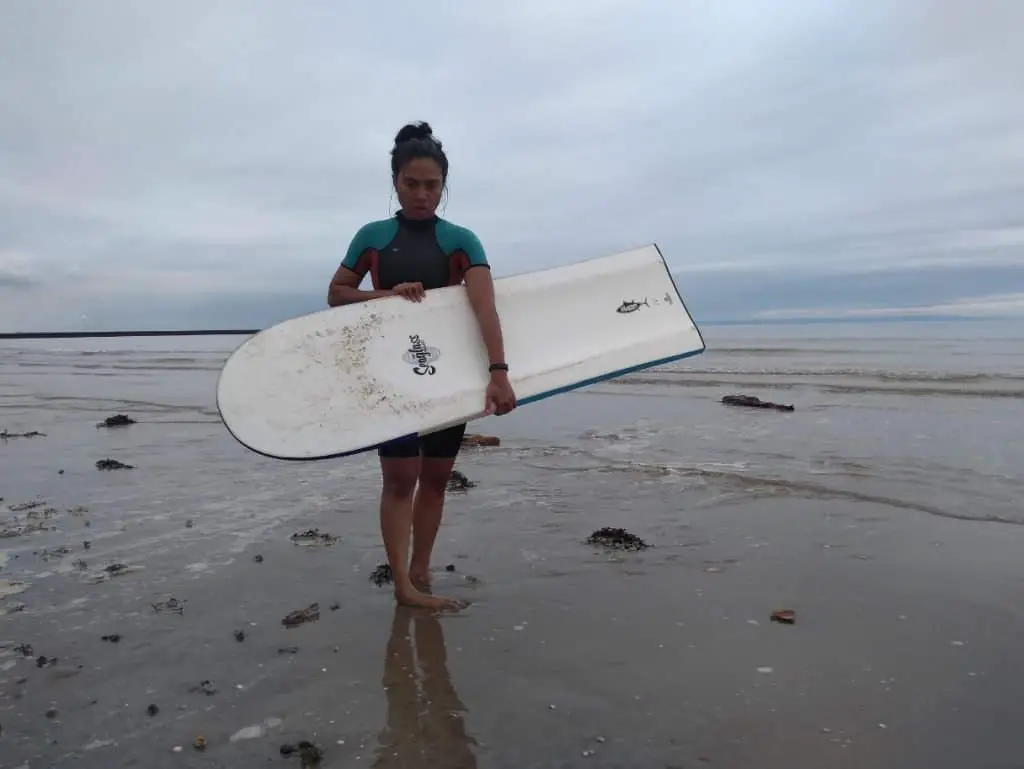
You can see the clip below of Uluboi, a native Hawaiian surfer riding the traditional finless alaia today, showing just how fast and relevant these boards are even today
Coming back to today, as shown above, you can ride ‘finless’ surfboards but these are really surfboards that make up for the lack of fins in the way that they are designed.
This comes in several ways: rails, concave, tail and rocker.
Rails on finless surfboards are much harder and sharper than standard surfboards since they aim to offer the grip that is missing without fins. These rails are often quite square, which is noticeably different to the rounded rails of all other surfboards.
The concave on the bottom of a finless surfboard also provides another way for the board to grip onto the wave face and offer the rider control. The way the water channels down, along the bottom of the board gives a form of direction and some control.
The tail on finless boards is also square. This is again due to the flow of the water along the bottom of the board and how that flow allows for control. You will not really see square tails on other surfboards that are as pronounced as on finless boards.
The last thing about finless boards is that they have almost no curve from the tail to nose, also called the ‘rocker’. This is again for added control and grip with riding along a wave face. Although this makes them extremely fast, it also means that finless boards are prone to nose diving and cannot handle steep waves or late take-offs.
This limited range of use is partly what makes finless surfboards less appealing to most surfers, combined with the fact that they are really hard to surf!
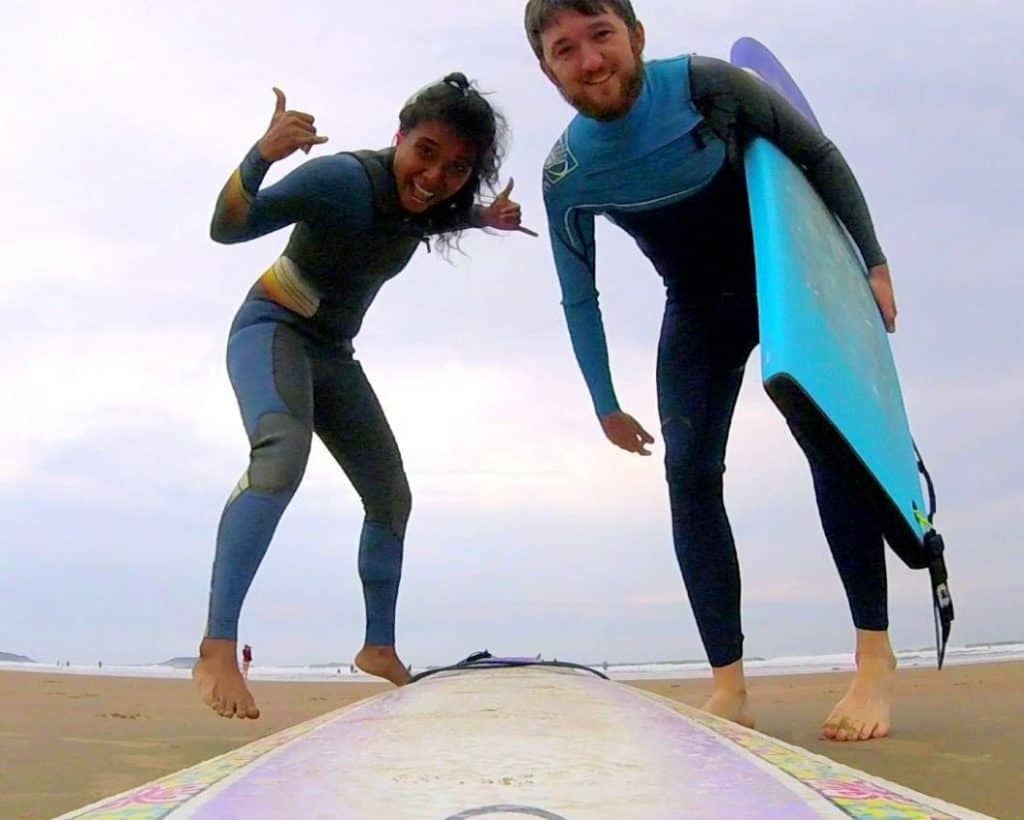
I actually have two finless boards, the Seaglass Albacore and the Seaglass Tuna, both of which are designed by Tom Wegener and distributed by Global Surf Industries.
These boards took me a long time to get used to but I really enjoy the feel of riding them and how they go so fast in the surf!
Either way, I’d say that finless boards are for more advanced surfers as they will just frustrate and annoy learners so they have a limited range of use and audience, hence their lack of wider popularity in surfing terms.
Summary: Alaias are the oldest and most traditional type of finless surfboard, made from wood and entirely flat. Other boards that you see today are not technically ‘finless’ since they use a deep concave and sharp rails to offer the grip instead of having actual fins on the bottom of the board.

